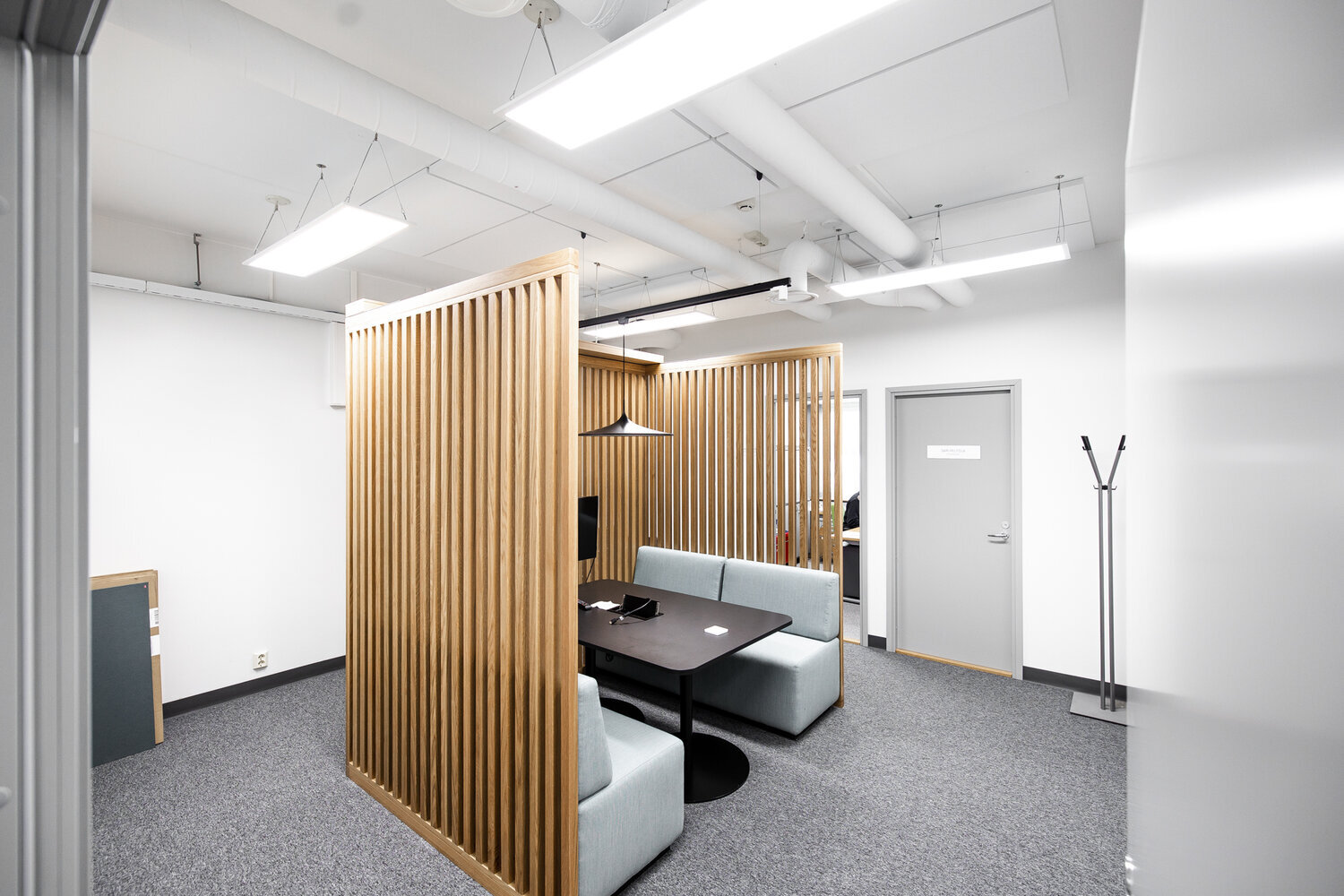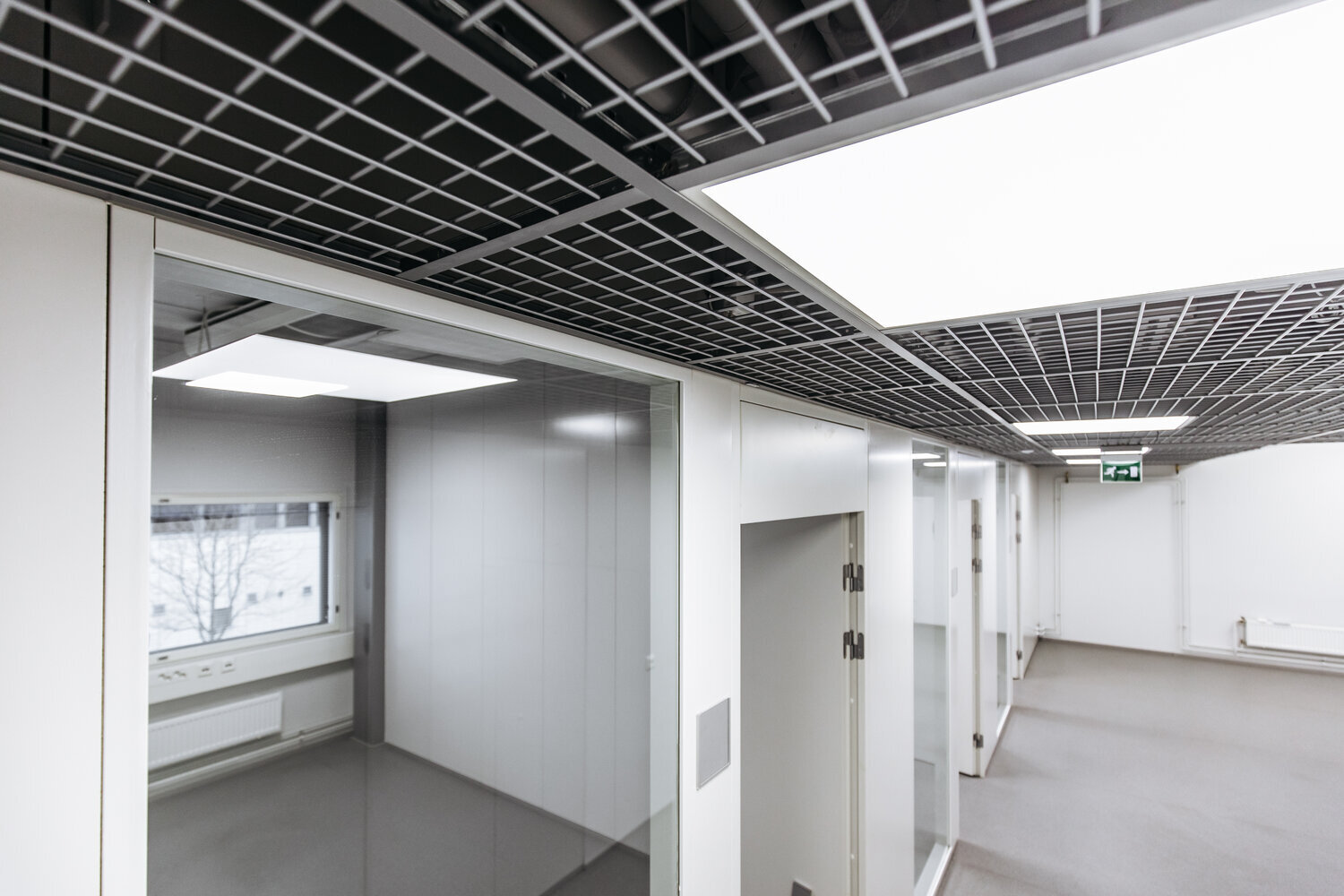Premises
A windowless conference room, an open plan office, a small office room, all of these have different lighting requirements. Offices need to have sufficient but glare-free lighting for working. The intensity and colour temperature of the lighting can be controlled to match and support the natural circadian rhythm of the human body. Lighting can therefore influence endocrine function, alertness and efficiency throughout the working day. It is important that work is carried out in safe and adequate lighting.
We have a range of luminaires that allows each employee in the company to customise the lighting to suit their own workstation.
Amount of light
Office lighting design should take into account the intended use of the premises, light output, glare-free lighting and uniformity of light. In general lighting, indirect lighting is often preferred to reduce shadows and create uniform lighting. Workstations often need lighting that is suitable for precise work, meeting rooms can often have varying light needs and public spaces may prefer more soothing lighting. Too little or too much lighting is often a distraction to work.
Colour temperature
The colour temperature must be considered in the light of the activities taking place in the space and the user. At workstations, adjustable lighting is often preferred, allowing the user to adjust the colour temperature to suit him or her.
Dazzle
The glare is caused by a large contrast difference. Glare often makes it difficult to work, for example, it can manifest itself as reflections on the computer screen and eye strain. Glare can be prevented by sufficient and even lighting, a wide-angle luminaire will illuminate the room evenly, reducing contrast differences.



